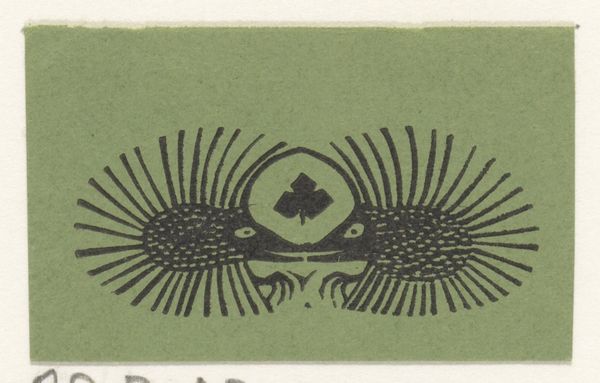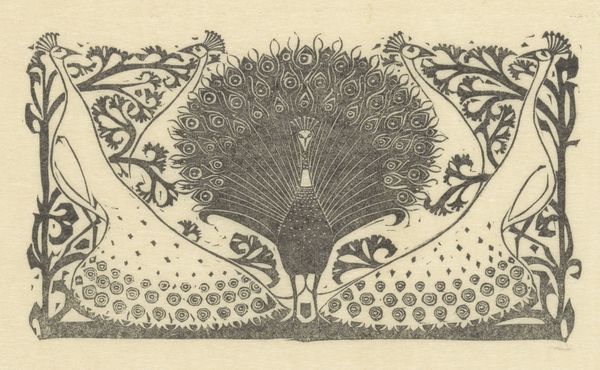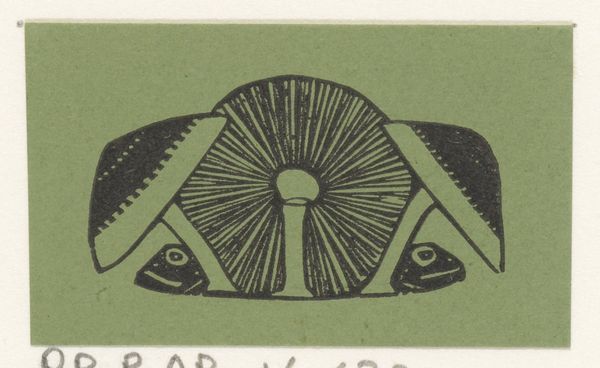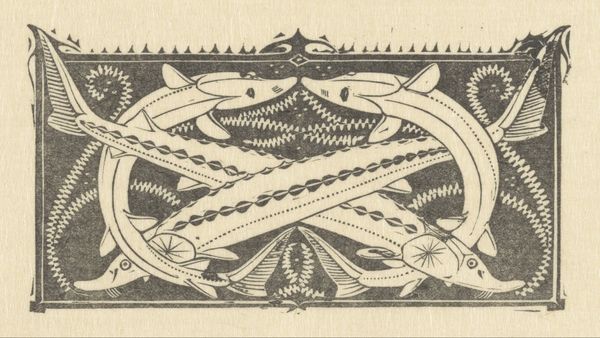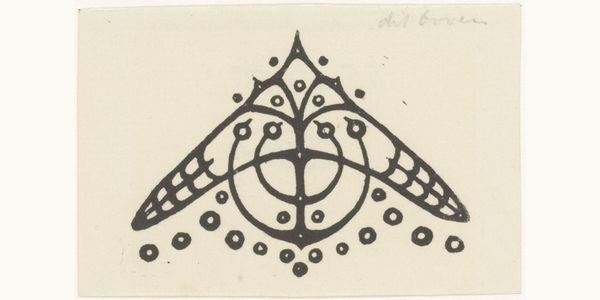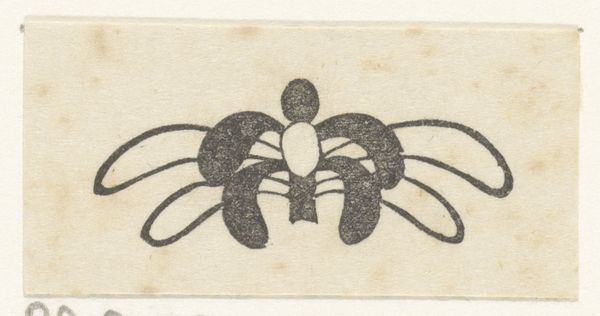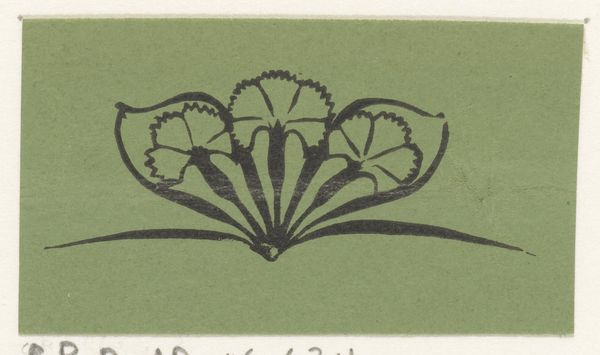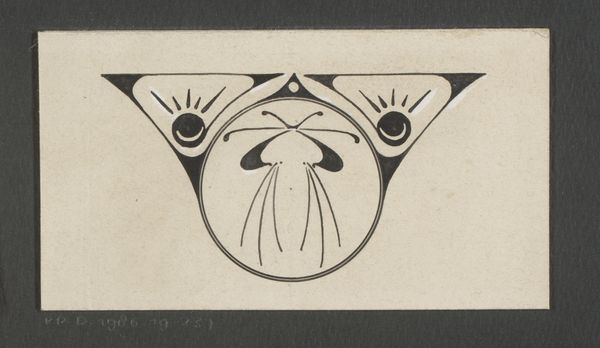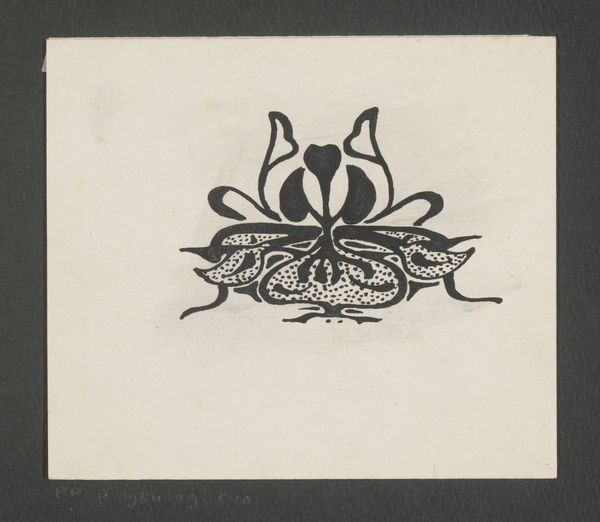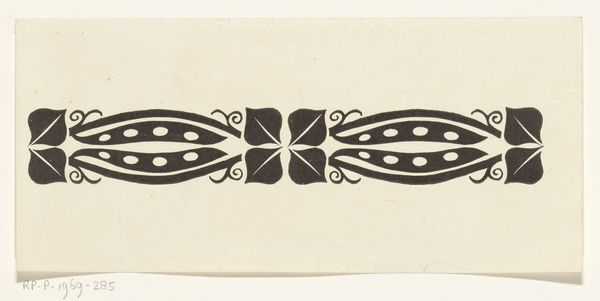
drawing, ink
#
drawing
#
comic strip sketch
#
art-nouveau
#
cartoon sketch
#
figuration
#
flat colour
#
ink
#
line
#
symbolism
Dimensions: height 23 mm, width 52 mm
Copyright: Rijks Museum: Open Domain
Curator: At first glance, I’m struck by its simplicity. It almost feels like something found in a child’s book. Editor: And yet there is surprising sophistication in this simplicity. We are looking at “Vignet met twee egels en een klimopblad,” or “Vignette with two hedgehogs and an ivy leaf,” made by Gerrit Willem Dijsselhof around 1892. It’s done in ink, so likely a drawing, here on display at the Rijksmuseum. The hedgehogs frame the ivy leaf which might lead us into exploring symbolism as a whole. Curator: Symbolism certainly jumps to mind. Dijsselhof was working during a time when artists were trying to move beyond realism, diving into hidden meanings and spiritual concepts. The hedgehog, with its defensive posture, might represent protection or perhaps a hidden vulnerability, while the ivy—typically evergreen—suggests immortality and endurance. Editor: What really captures my interest is how the technique mirrors that sentiment. This isn’t about perfectly rendering a hedgehog; it’s about the reproducible form of the drawing as line that matters. Considering the work being produced around this time, one immediately asks who this drawing was created for, and how many iterations might exist, beyond just the copy we see before us. Curator: Ah, and there's a powerful dichotomy present here. Hedgehogs themselves, associated with autumn and the turning inward before winter—oppositional in character to that evergreen ivy. There’s definitely an underlying exploration of cycles and permanence at play. Editor: To bring it back to the medium, it’s easy to mass produce something that's primarily done as a line. Was the artist aware of that tension between mass market reproduction, and what these natural symbols might come to mean? How do we consume and apply what the symbol seems to represent? Curator: It invites that line of questioning, I agree. Seeing how the work invites us to contemplate nature through these simplified and loaded motifs truly highlights the allure of symbolism. Editor: Indeed, even with such limited materials, Dijsselhof poses compelling questions about not just symbolism itself, but the production that it might suggest as well.
Comments
No comments
Be the first to comment and join the conversation on the ultimate creative platform.
